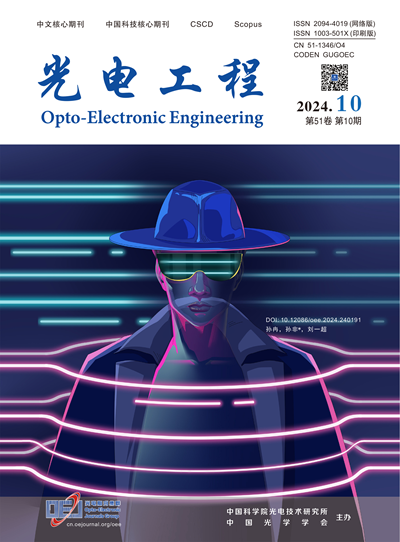基于通道关注和迁移学习的红外图像超分辨率重建
Q3 Engineering
引用次数: 1
摘要
近年来,红外成像技术发展迅速,在军事侦察、安防监控、医学成像等领域的应用越来越广泛。然而,红外图像在成像或传输过程中,受到环境、设备等诸多因素的影响。红外图像往往具有较低的分辨率,这大大降低了红外图像所包含的信息量,制约了红外图像的应用价值。因此,如何获取高分辨率、高信息的红外图像成为人们迫切需要解决的问题。近年来,深度学习技术的发展突飞猛进,基于深度学习的超分辨率方法开始出现。针对红外图像分辨率低、质量不高的问题,提出了一种基于通道关注和迁移学习的红外图像超分辨率重建方法。该方法设计了一个深度卷积神经网络,通过引入通道注意机制来增强网络的学习能力,并采用残差学习方法来缓解梯度爆炸或消失的问题,加速网络的收敛。由于高质量红外图像难以采集且数量不足,因此该方法分为两步:第一步是利用自然图像对神经网络模型进行预训练,第二步是利用迁移学习知识对预训练模型的参数进行微调,使用少量的高质量红外图像,使模型更好地重建红外图像。最后,加入多尺度细节增强滤波器,提高重建红外图像的视觉效果。在Set5和Set14数据集以及红外图像上的实验表明,加深网络深度和引入通道关注机制可以提高超分辨率重建效果,迁移学习可以很好地解决红外图像样本数量不足的问题,多尺度细节增强滤波器可以改善重建图像的细节,增加图像的信息量。这些卷积神经网络直接应用于红外图像领域,存在一些问题:SRCNN、FSRCNN和ESPCN的网络卷积层数较少,网络深度不足,学习特征会比较单一,忽略了图像特征之间的差异。这种相互关系使得红外图像的深层信息难以提取,并且SRGAN可能会生成在某些细节上与原始图像不接近的超分辨率图像,这不利于红外图像在军事、医疗和监视中的应用。另一个需要克服的问题是,在现实生活中很难收集到足够数量的高质量红外图像,而普通的深度学习方法需要大量不同场景和目标的图像作为训练样本。利用红外图像作为训练数据集来实现深度学习方法,往往达不到预期的效果。为了解决这些问题,本文提出了一种基于通道关注和迁移学习的红外图像超分辨率重建方法。该方法首先设计一个深度卷积神经网络,集成通道注意机制学习特征空间中通道之间的相关性,增强网络的学习能力,并利用残差学习减少梯度爆炸或消失问题,加快网络收敛速度。然后,考虑到高质量红外图像难以采集且数量不足,将网络训练分为两步:第一步使用自然图像预训练自然图像的超分辨率模型,第二步使用迁移学习知识。利用少量高质量红外图像,快速传递和微调预训练好的模型参数,提高模型对红外图像的重建效果,从而获得红外图像的超分辨率模型。最后,加入多尺度细节增强(MSDB)模块,增强红外重建图像的细节和视觉效果,增加信息量。本文章由计算机程序翻译,如有差异,请以英文原文为准。
Super-resolution reconstruction of infrared image based on channel attention and transfer learning
In recent years, infrared imaging technology has developed rapidly and has been increasingly used in military reconnaissance, security surveillance, and medical imaging. However, in the process of infrared image imaging or transmission, it is affected by many factors such as environment and equipment. The infrared image often has a low resolution, which greatly reduces the amount of information contained in the infrared image and restricts the application value of the infrared image. Therefore, how to obtain high-resolution and high-information infrared images has become an issue that people urgently need to solve. In recent years, the development of deep learning technology has made rapid progress, and super-resolution methods based on deep learning have begun to appear. However, if A super-resolution reconstruction method of infrared images based on channel attention and transfer learning was proposed to solve the problems of low resolution and low quality of infrared images. In this method, a deep convolutional neural network is designed to enhance the learning ability of the network by introducing the channel attention mechanism, and the residual learning method is used to mitigate the problem of gradient explosion or disappearance and to accelerate the convergence of the network. Because high-quality infrared images are difficult to collect and insufficient in number, so this method is divided into two steps: the first step is to use natural images to pre-train the neural network model, and the second step is to use transfer learning knowledge to fine-tune the pre-trained model’s parameters with a small number of high-quality infrared images to make the model better in reconstructing the infrared image. Finally, a multi-scale detail boosting filter is added to improve the visual effect of the reconstructed infrared image. Experiments on Set5 and Set14 datasets as well as infrared images show that the deepening network depth and introducing channel attention mechanism can improve the effect of super-resolution reconstruction, transfer learning can well solve the problem of insufficient number of infrared image samples, and multi-scale detail boosting filter can improve the details and increase the amount of information of the reconstruction image.these convolutional neural networks are directly applied to the infrared image field, there are some problems: SRCNN, FSRCNN, and ESPCN have fewer network convolutional layers and insufficient network depth, and the learning features will be relatively single, ignoring the differences between image features. The mutual relationship makes it difficult to extract the deep-level information of the infrared image, and SRGAN may generate super-resolution images that are not close to the original image in certain details, which is not conducive to the application of infrared images in military, medical and surveillance. Another problem that needs to be overcome is that it is difficult to collect a sufficient number of high-quality infrared images in real life, and a large number of images of different scenes and targets are required as training samples for common deep learning methods. The infrared images used as training data sets to achieve deep learning methods often fail to achieve the desired effect. In order to solve these problems, this paper proposes a method for super-resolution reconstruction of infrared images based on channel attention and transfer learning. This method first designs a deep convolutional neural network, which integrates the channel attention mechanism to learn the correlation between the channels in the feature space, enhances the learning ability of the network, and uses residual learning to reduce the problem of gradient explosion or disappearance and to speed up network convergence. Then, considering that high-quality infrared images are difficult to collect and insufficient in number, the network training is divided into two steps: the first step uses natural images to pre-train a super-resolution model of natural images, and the second step is to use transfer learning knowledge. Using a small number of high-quality infrared images, the pre-trained model pa-rameters are quickly transferred and fine-tuned to improve the reconstruction effect of the model on the infrared image, thereby obtaining a super-resolution model of the infrared image. Finally, a multi-scale detail boosting (MSDB) module is added to enhance the details and visual effects of the infrared reconstructed image and to increase the amount of in-formation.
求助全文
通过发布文献求助,成功后即可免费获取论文全文。
去求助
来源期刊

光电工程
Engineering-Electrical and Electronic Engineering
CiteScore
2.00
自引率
0.00%
发文量
6622
期刊介绍:
Founded in 1974, Opto-Electronic Engineering is an academic journal under the supervision of the Chinese Academy of Sciences and co-sponsored by the Institute of Optoelectronic Technology of the Chinese Academy of Sciences (IOTC) and the Optical Society of China (OSC). It is a core journal in Chinese and a core journal in Chinese science and technology, and it is included in domestic and international databases, such as Scopus, CA, CSCD, CNKI, and Wanfang.
Opto-Electronic Engineering is a peer-reviewed journal with subject areas including not only the basic disciplines of optics and electricity, but also engineering research and engineering applications. Optoelectronic Engineering mainly publishes scientific research progress, original results and reviews in the field of optoelectronics, and publishes related topics for hot issues and frontier subjects.
The main directions of the journal include:
- Optical design and optical engineering
- Photovoltaic technology and applications
- Lasers, optical fibres and communications
- Optical materials and photonic devices
- Optical Signal Processing
 求助内容:
求助内容: 应助结果提醒方式:
应助结果提醒方式:


